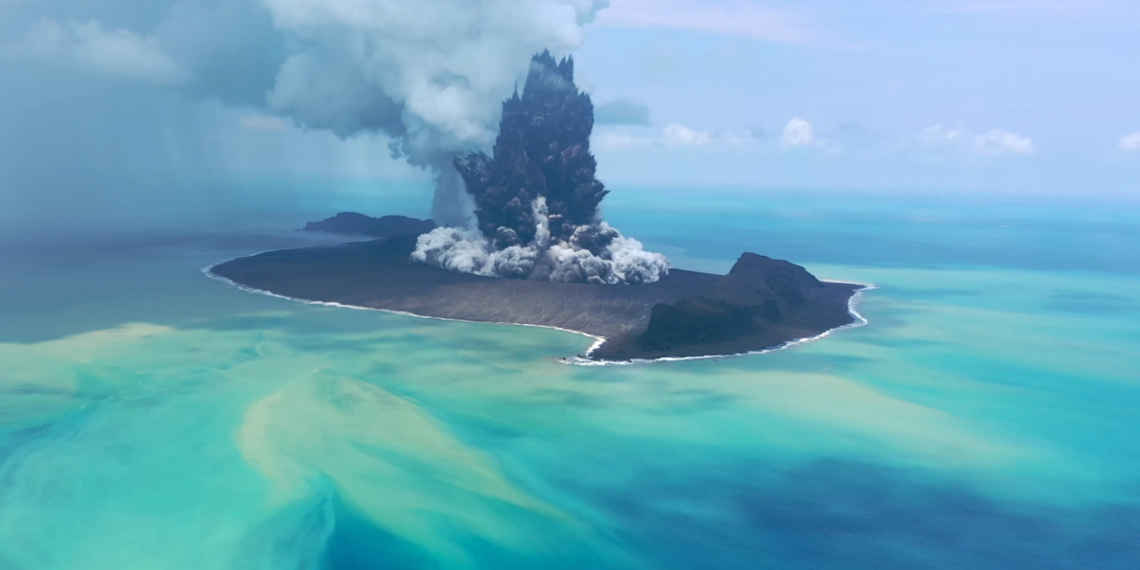The massive Hunga Tonga underwater volcanic eruption in January 2022 injected unprecedented amounts of water vapour into the stratosphere, raising its moisture levels by over 10% and contributing to an observed 0.3-0.4°C rise in global temperatures.
Recent findings from Colorado-based scientists, and reported in the Daily Sceptic directly link this warming to a simultaneous cooling of 0.5-2°C in the upper atmosphere, reinforcing the well-established anti-correlation between lower and upper atmospheric layers.
Unlike typical land-based volcanic eruptions, Hunga Tonga released minimal dust particulates, meaning it did not trigger the usual surface cooling effects seen in past eruptions like El Chichón and Pinatubo.
These findings challenge mainstream climate narratives that attribute the recent temperature anomalies primarily to human-induced carbon emissions.
Despite the compelling evidence, legacy mainstream media outlets have largely ignored these findings, continuing to attribute warming trends to “greenhouse gas emissions” rather than natural climatic variations.
Critics argue that reliance on urban heat-affected surface temperature measurements and selective climate modelling has overshadowed satellite data, which shows a sharp cooling trend in recent months.
Skeptical ‘climate change’ researchers, including Javier Vinos, highlight that no CO2-driven climate model predicts such a rapid warming spike, reinforcing the likelihood that Hunga Tonga played a significant role.
Nonetheless, prominent climate scientists, such as Texas A&M’s Andrew Dessler, continue to dismiss the volcano’s influence, maintaining that human activity remains the primary driver of climate change.

Volcanos have always volcanoed.
On 27 August 1883, a series of four huge explosions almost destroyed Krakatoa.
“The explosions were so violent that they were heard 3,110 km (1,930 mi) away in Perth, Western Australia, and the island of Rodrigues near Mauritius, 4,800 km (3,000 mi) away.[4] The pressure wave from the third and most violent explosion was recorded on barographs around the world.[31] ” -wikipedia
Summer temperatures in the northern hemisphere fell by an average of 0.4 °C (0.72 °F) in the year following the eruption.[
Just imagine if Yellowstone, Flego & Taupo blew at the same time…nuclear winter without the radiation.
Invercargill, here we come…
Just wait until the Cascadia breaks loose…BAWHAWHAWHAWHAW!!!
https://www.safetrek.com/product/cascadia/
And then, there’s the Tsunamis which will travel across the Pacific region.
“Heat generally cannot flow spontaneously from a material at a lower temperature to a material at a higher temperature.” (Second law of thermdynamics)
“…..contributing to an observed 0.3-0.4°C rise in global temperatures” ….”Colorado-based scientists, and reported in the Daily Sceptic directly link this warming to a simultaneous cooling of 0.5-2°C in the upper atmosphere, reinforcing the well-established anti-correlation between lower and upper atmospheric layers.
The narratives here illustrate an absence of interpretation that must obey the laws of thermodynamics, particularly the second law that states heat moves from hot to cold. Emitted Long Wave Radiation (heat) may be transiently delayed en route by changes in atmospheric composition but can not be “trapped” (as in a greenhouse) as they radiate into space.
Another reason for extreme weather past few years. All the moisture comes back down.